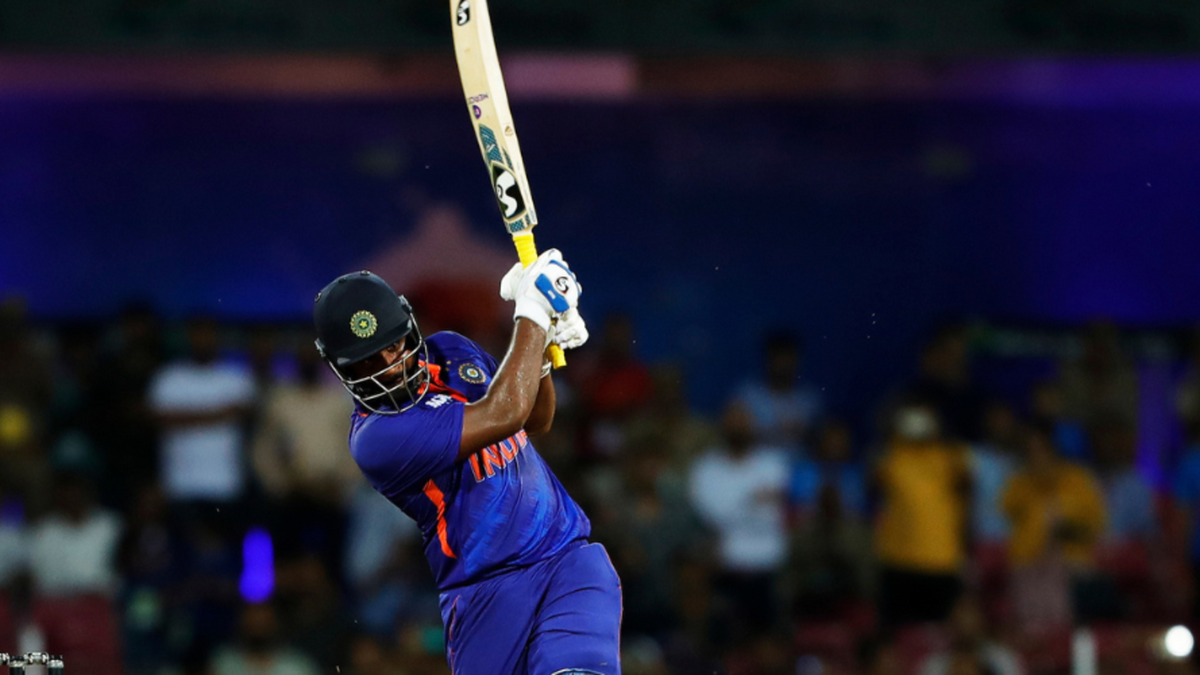
Sanju Samson has long been portrayed as someone who has not fulfilled his potential. But after a stellar knock against South Africa on Thursday, he has finally arrived on the international stage, writes Shashwat Kumar.
It has been a while since Sanju Samson made his international debut – back in 2015, in a T20I against Zimbabwe. Ever since, there has been a perception that he has not made the most of his talent. Even in the IPL, he has flown out of the blocks at the start of multiple campaigns before flattering to deceive throughout the rest of the season. There is, however, a spin to this story as well.
Much of the criticism directed at Samson is not unfair. Samson is yet to tally more than 500 runs in a single edition of the IPL; he also averages just 21.14 in T20Is. But if you look closer at his international appearances, and it becomes clear that he has not really been given as many chances as perceived. There have been only two instances in T20I cricket where Samson has played three matches in succession – against Australia in 2020 and against Sri Lanka in 2021. On most other occasions, he has been brought into the side and then discarded just as swiftly. Similarly, his ODI debut came in July 2021, six years after he had made his international bow. He never really been backed by the team’s management.
So, whenever he has walked out to bat in international cricket, he has had to shoulder the burden of expectation alongside the knowledge that he may not have many chances left. That is, you might argue, part and parcel of being an India cricketer. But in Samson’s case, it is pertinent because of how he plays and how he needs a bit more security and backing than others. He likes taking risks and does not mind getting out if the prospective trade-off seems worth it. It has, of course, led to strings of low scores and scourges of frustration. But when it has clicked, like it did against Ireland earlier in the year when he scored 77 off 42 balls, it has made people believe he is cut out for international cricket, and even proclaim that he is one of the most gifted stroke-makers in the country.
His 86-run unbeaten knock on Thursday, though, was different, and that is what made it special, simply because he explored a side of his game people thought did not exist. He hit nine fours and three mammoth sixes, and the ease with which he hit those boundaries on a tricky track was a fair illustration of his class. Just as crucial, however, was everything that he did in between. Samson rotated the strike, waited for the right match-ups, picked his areas and almost powered India to an improbable victory. He even played second-fiddle to Shreyas Iyer, despite having the ability to match him stroke for stroke. It must also not be forgotten that Samson entered the fray with India struggling at 51-4, chasing 250. India were under considerable pressure and they needed their wicket-keeper to stand up. And he did.
Courtesy of that innings, Samson now averages 65.5 in ODIs, with a strike rate of 110.54 in 8 matches. Almost all of these have come lower down the order too, where he has tried to embrace the finisher’s role – something he has not rarely done in domestic cricket. Hence, there are a few narratives that he has already changed.
For much of his career, critics have argued that he can only bat one way and that he is inflexible. There have also been murmurs that he cannot bat responsibly and has a tendency of throwing his wicket away. And, that he cannot gauge the gravity of situations and approach them accordingly. On Thursday, he proved those characterisations of him as a player are not entirely air.
In hindsight, there are a few things Samson could have done differently. He could have taken a few more risks earlier in his knock, and he could have actively sought strike in the penultimate over. The balls that he did not hit for boundaries in the final over could have gone the distance on any other day as well. What is equally noteworthy, though, is that this was a batter stepping out of his comfort zone, performing a role that he has not performed very often. Still, it felt as if he had been doing it all his life.
It was, in many ways, a silencing of Samson’s critics, who have lambasted him in the past for not doing what was required; instead, only batting in his bubble, which led to frustration as many times as he sent fans into a frenzy. From that perspective alone, you can sense that this version of Samson is different. A single innings is not usually an adequate yardstick for predicting how a career might pan out. But after everything Samson has been through, right from being questioned about his place to only making his ODI debut last year, it feels right in this case.
So much so that you want to believe his first coming as an ODI cricketer is also signalling his true arrival on the international stage. It has been a seven-year wait, and India and Samson haven’t exactly taken the conventional path to get here. Yet, it feels all of it could be worth the wait.








